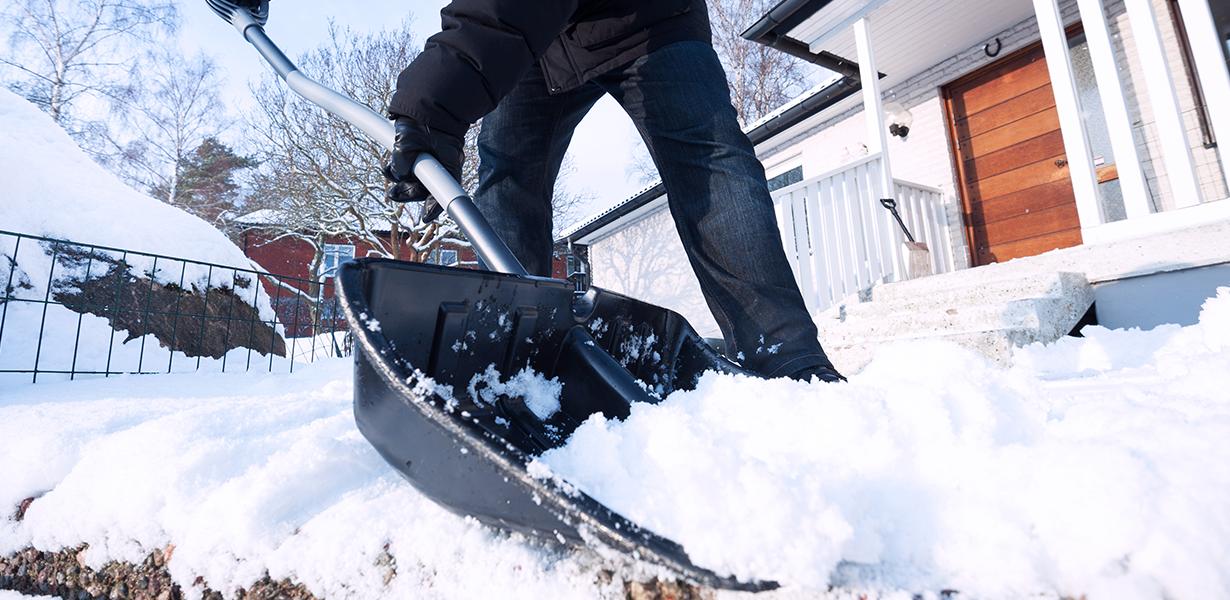Simple steps to keep homes safe, warm and ready for the season
Winter is beautiful, but it’s not always kind to homes. From heavy snow and icy winds to frozen pipes and power outages, the season can bring costly surprises for homeowners — nearly $6 billion in insured losses in 2022, according to the Insurance Information Institute. However, you have the opportunity to help your clients avoid common winter claims like ice dams, roof damage, falling tree limbs and house fires.
Share these practical, easy-to-implement tips to winterize for cold weather, and help keep their homes protected, their families safe and their holidays worry-free.
1. Encourage roof and gutter maintenance
Heavy snow, ice and strong winds can wreak havoc on roofs and drainage systems. Recommend that clients inspect for loose or damaged shingles and clean gutters regularly. Clogged gutters can lead to ice dams — blockages that force water back under shingles, causing leaks and interior damage.
For homes prone to ice dams, PropertyCasualty360 suggests installing heat cables along gutter lines to keep water flowing. Clients should also consider using a snow rake to prevent snow buildup on roofs or hiring professionals for safe removal.
2. Help clients secure their homes while away
An empty home is a magnet for burglars, but a few small actions can make a big difference:
- Double-check all locks on doors and windows. Reinforce locks with longer screws or upgrade to smart locks.
- Use occupancy cues, like parking a car in the driveway, leaving lights or TVs on timers and keeping mailboxes and porches clear of packages.
- Install security features, such as motion-activated lights, cameras or video doorbells, for added peace of mind.
And encourage clients to keep their vacation plans off social media until they return.
Related: Show your clients how to prevent identity theft this holiday season
3. Trim trees and clear the yard
Falling branches during storms are a common cause of property damage. Advise homeowners to trim trees near roofs, vehicles and power lines before winter storms hit. Clearing shrubs around doors and windows also improves visibility, discouraging potential intruders.
4. Protect pipes from freezing
Frozen pipes can lead to major water damage — and repair bills. To prevent this, suggest these simple measures:
- Insulate pipes in unheated areas like garages and basements.
- Keep the thermostat set to at least 65°F, even at night or while away.
- Let faucets drip during freezing weather to keep water flowing.
For extended absences, shutting off water and draining pipes can prevent an unpleasant homecoming.
5. Advise on furnace maintenance to avoid puffbacks
Puffbacks happen when a furnace or boiler misfires, sending smoke or soot into the home. This messy and sometimes dangerous issues occurs when unburned fuel builds up in the combustion chamber and ignites. As PropertyCasualty360 reminds us, puffbacks can be costly to fix and are often caused by non-covered issues.
Help clients avoid puffbacks by recommending an annual inspection by an HVAC professional. They’ll check for fuel leaks, clogged vents, damaged parts and cracks in the heat exchanger.
6. Share fire prevention tips
Winter means more indoor heating, cooking and holiday lights — all of which increase fire risks. Help your clients reduce risks by reminding them to:
- Test smoke and carbon monoxide detectors monthly. Replace batteries when needed.
- Store a fire extinguisher in the kitchen and garage, within easy reach. Check their expiration dates and have them recharged when necessary.
- Keep flammable items at least three feet from space heaters, fireplaces and candles. Never leave fires unattended.
And remind them: Plug in space heaters directly to outlets — never into extension cords.
Related: Take the spark out of the kitchen with these Thanksgiving safety tips
7. Encourage preventative measures for slip-and-fall accidents
Icy walkways are an accident waiting to happen. Suggest that clients shovel snow promptly and use salt or sand to keep paths safe for visitors — and delivery drivers. It’s not just about liability; it’s about protecting everyone who comes to their door.
8. Embrace home automation for comfort and savings
Smart thermostats make winter easier and more efficient for homeowners. These devices can automatically lower the heat when no one’s home and warm things up just before they return. Not only does this keep energy use in check, but it can also save up to 12% on heating costs — often enough to pay for the device within a couple of years.
Encourage your clients to explore smart home features for a cozier, more-energy efficient winter.
9. Update insulation for better protection
Winter’s cold can creep in through unsealed doors, drafty windows and poorly insulated attics. To properly winterize for cold weather, recommend sealing gaps around windows and doors with weatherstripping or caulk and adding insulation to attics or crawl spaces. Not only will this help keep the home cozy, but it also reduces heating costs and prevents ice dams.
Keep the chill outside and the comfort in
A little preparation can save homeowners from a season of headaches. By sharing these tips to winterize for cold weather, you’re helping your clients protect their homes, their budgets and their peace of mind. Winter may bring challenges, but with the right precautions, your clients can spend the season enjoying all the warmth and joy it has to offer.

